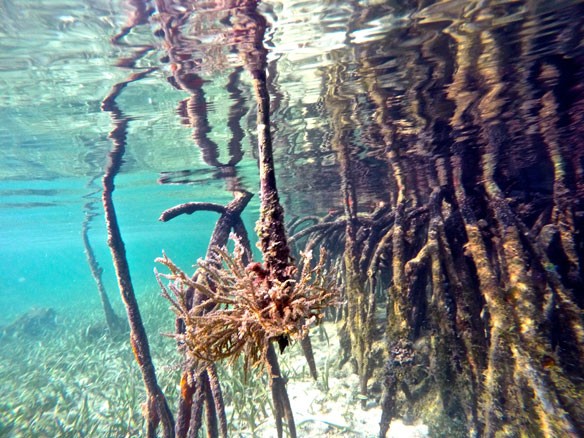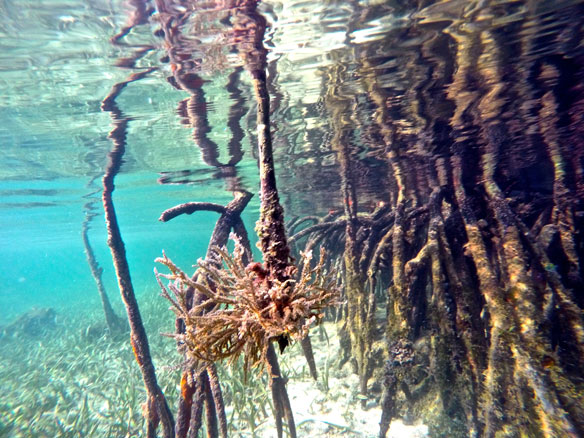
Mangrove roots. Photograph: © SAF — Coastal Care
Excerpts;
A James Cook University scientist has discovered why there was an unprecedented dieback of mangroves in the Gulf of Carpentaria in early 2016 – the plants died of thirst.
Dr Norman Duke, leader of JCU’s Mangrove Research hub, headed an investigation into the massive mangrove dieback. The findings were published in the Journal of Marine and Freshwater Research (Tuesday 14 March).
The scientists used aerial observations and satellite mapping data of the area dating back to 1972, combined with weather and climate records.
Dr Duke said they found three factors came together to produce the unprecedented dieback of 7400 hectares of mangroves, which stretched for 1000 kilometres along the Gulf coast…
Read Full Article, James Cook University Australia (03-14-2017)
Extreme weather explains ‘unprecedented’ mangrove deaths in NT: study; ABC News Australia (03-13-2017)
One of the worst instances of mangrove forest dieback ever recorded globally struck Australia’s Gulf of Carpentaria in the summer of 2015-16. A combination of extreme temperatures, drought and lowered sea levels likely caused this dieback…
Northern prawn fleet seek answer on unexplained mass mangrove dieback in Gulf of Carpentaria, ABC News Australia (10-10-2016)
Austral Fisheries chief executive officer is questioning why more is not being done to explain a mass mangrove dieback event in the Gulf of Carpentaria, in northern Australia…
Queensland’s mangrove ecosystem dying in secret; Brisbane Times (05-20-2016)
Mangroves die-off in Queensland’s Gulf Country and Limmen Bight, ABC News Australia (05-13-2016)
Experts have been focusing on hundreds of kilometres of mangroves along the coast in Queensland, that have turned a ghostly white. Serious concerns about the situation, which is compared to coral bleaching happening on the Great Barrier Reef, which is the result of warmer ocean temperatures, are raised…
Destruction of Mangroves Costs up to US$42 billion in Economic Damages Annually – UNEP Report (10-14-2014)
The world is losing its mangroves at a faster rate than global deforestation, the United Nations revealed, in a new report “Importance of Mangroves: A Call to Action,” adding that the destruction of the coastal habitats was costing billions in economic damages and impacting millions of lives…









